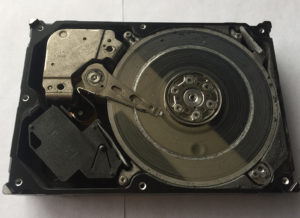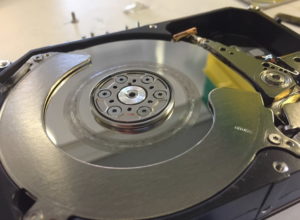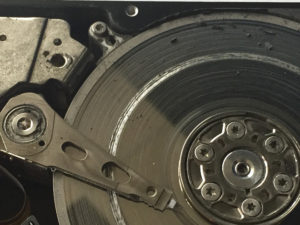 At Datarecovery.com, we support consumers’ right to repair their own devices. If you pay $1,000 for a smartphone, you should have the option of repairing a broken screen or a busted USB-C port on your own. Generally speaking, manufacturers shouldn’t engineer devices to discourage people from attempting DIY fixes.
At Datarecovery.com, we support consumers’ right to repair their own devices. If you pay $1,000 for a smartphone, you should have the option of repairing a broken screen or a busted USB-C port on your own. Generally speaking, manufacturers shouldn’t engineer devices to discourage people from attempting DIY fixes.
However, some situations require professional intervention. If you’ve lost data due to a hard drive failure, you should never attempt to open the hard drive enclosure. Below, we’ll explain why this is so important — and why you’re taking enormous risk if you ignore our advice.
If you’ve lost data due to a hard drive failure, a solid-state drive (SSD) failure, or for any other reason, we’re here to help. For a free estimate, call 1-800-237-4200 or start a case online.
Why Data Recovery Laboratories Have Clean Rooms
Each of our laboratories is outfitted with certified clean rooms and clean-flow benches. Outfitting a new clean room and obtaining appropriate certifications is an extremely expensive process: A 10’x10′ cleanroom can cost upwards of $100,000.
We don’t make these investments to brag about our equipment. Hard drives are extremely precise devices, and microscopic contaminants can severely affect their operation.
Some facts to consider:
- Hard drives store data on platters, which are coated with a thin layer of magnetic material.
- Read/write heads (also called actuator heads) transmit commands from the hard drive’s controller board to — you guessed it — read and write the magnetic charges from the platters.
- Read/write heads don’t actually come into contact with the platters. As the platters spin, they create a cushion of air that allows the heads to float just above the surface of the magnetic material.
- During operation, the space between a hard drive’s read/write heads and the platters is usually around 5 nanometers.
- On average, the width of a human hair is around 75000 nanometers.
If a piece of dust or other contaminant comes between the read/write heads and the platters, the heads may press the contaminant into the platters, causing rotational damage (or scoring). This physically removes the magnetic material that stores your data. Once the material is removed, data recovery is impossible.
Related: What Is A Hard Drive Head Crash?
Here’s What Severe Hard Drive Platter Damage Looks Like
Platter scoring can occur during any head crash, which is why we advise our clients to turn off the hard drives as soon as possible after an HDD failure. If you attempt to operate the drive in a failed state, bad things happen. Below are a few images to illustrate our point.

The concentric “rings” on the platters indicate permanent data loss.

Another view of a hard drive with severe platter damage.

The magnetic material is completely removed and the platters are transparent.

This hard drive shows rough platter damage where the head remained in contact with the platters for several hours of operation.

This hard drive has no visual signs of platter damage.
In all of these cases (except the last one, which had no signs of platter damage), full data recovery was impossible. While we can often achieve a partial recovery by reading around the damaged area of a hard drive, any areas with severe physical damage are lost forever.
The bottom line: Don’t risk your data. When you open a hard drive outside of a certified clean room, you risk introducing contaminants. The simple act of removing a hard drive’s casing — or prying it open with a flathead screwdriver — can also damage the spindle, actuator heads, and other important components, even if you don’t take any other actions after opening the enclosure.
Related: A Look Inside Datarecovery.com’s Hard Drive Parts Inventory
Opening Your Hard Drive Can Ruin Your Data
With all of that said, if you simply want to open a hard drive to understand more about its components, go ahead — after all, that’s how many of our engineers became interested in data recovery. Just don’t expect to find anything that you can fix with a screwdriver or a wrench.
By opening your hard drive, you’re severely raising your chances of permanent media damage. Even if you turn the case over to a professional data recovery provider after your DIY repair attempt, you’re taking a big risk.
Datarecovery.com only uses non-destructive methods to recover data from damaged hard drives, and each of our laboratories is equipped with certified cleanroom technology. We invest in equipment, research, and technology development to provide our clients with the industry’s best success rates.
With our no data, no charge guarantee and risk-free media evaluations, we offer the best resources for professional hard drive repair and data recovery. Get started by scheduling an evaluation online or call us at 1-800-237-4200 to discuss your case.





